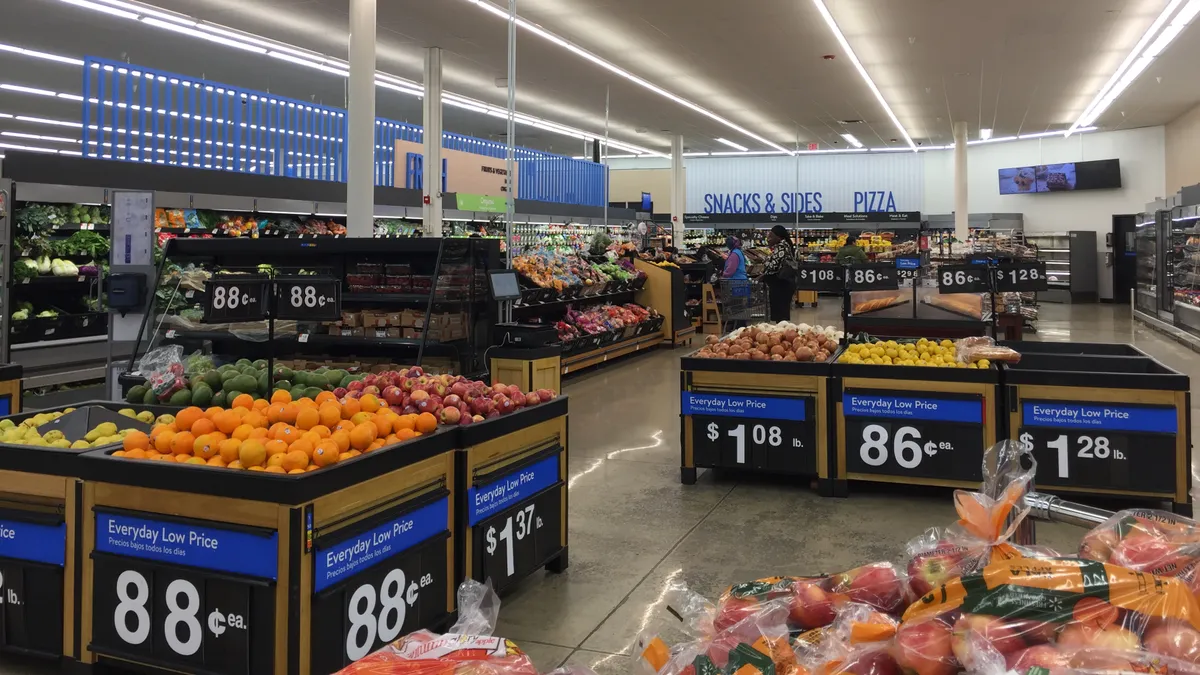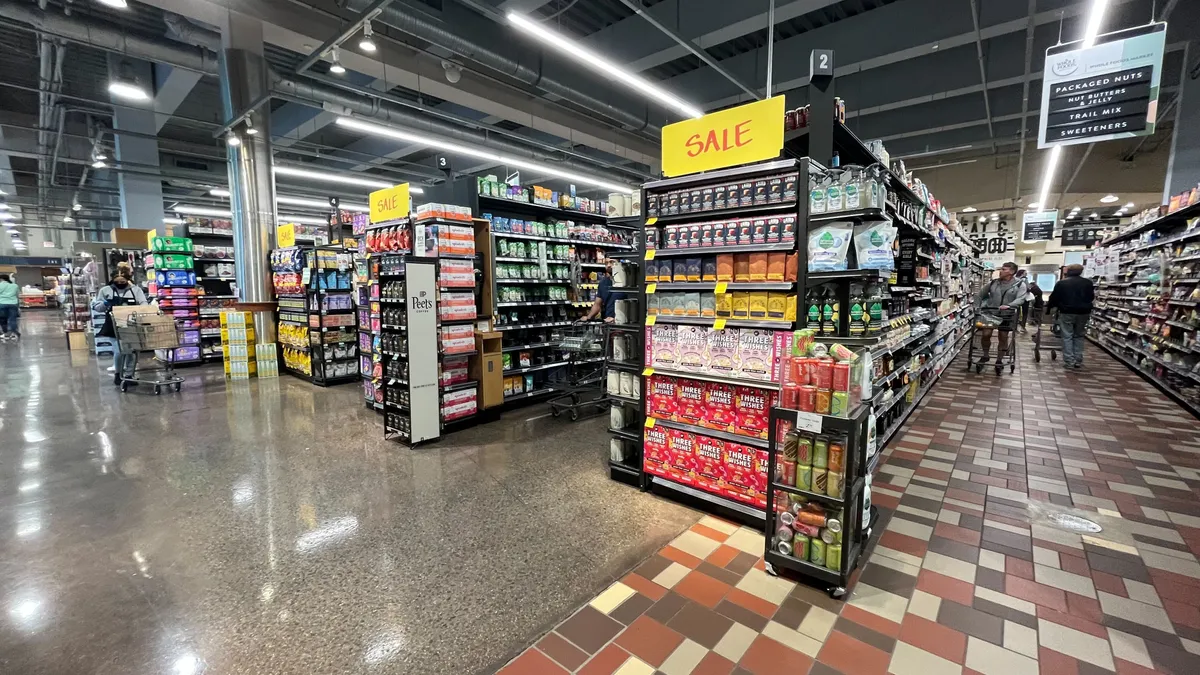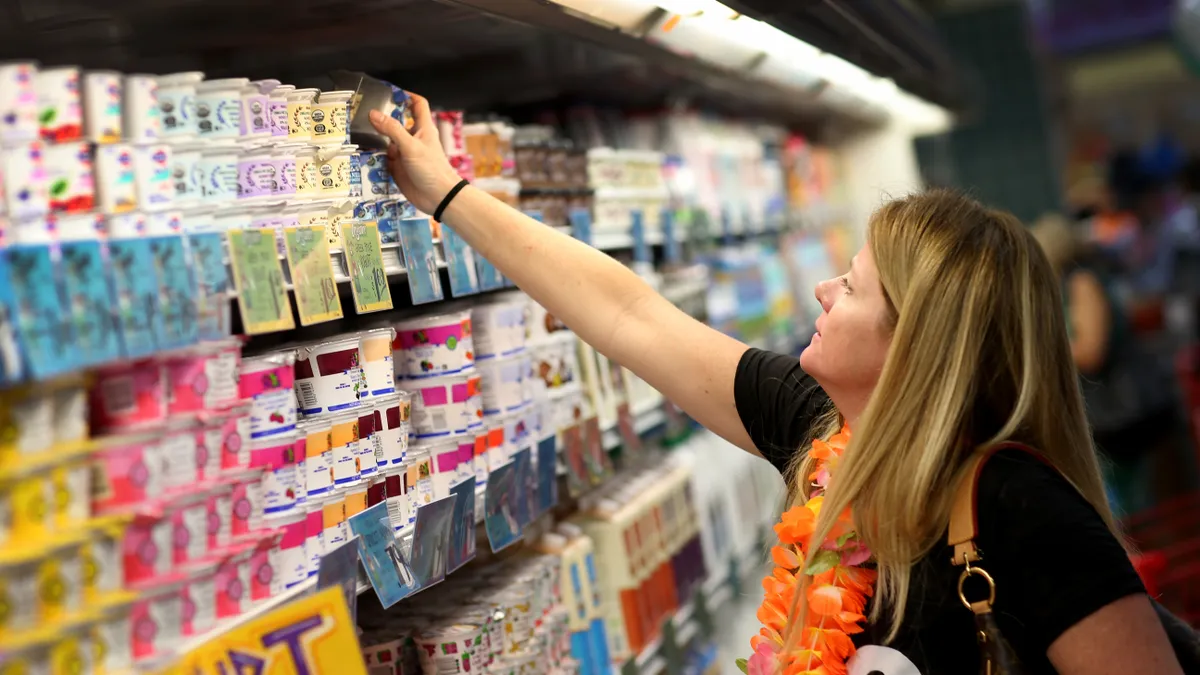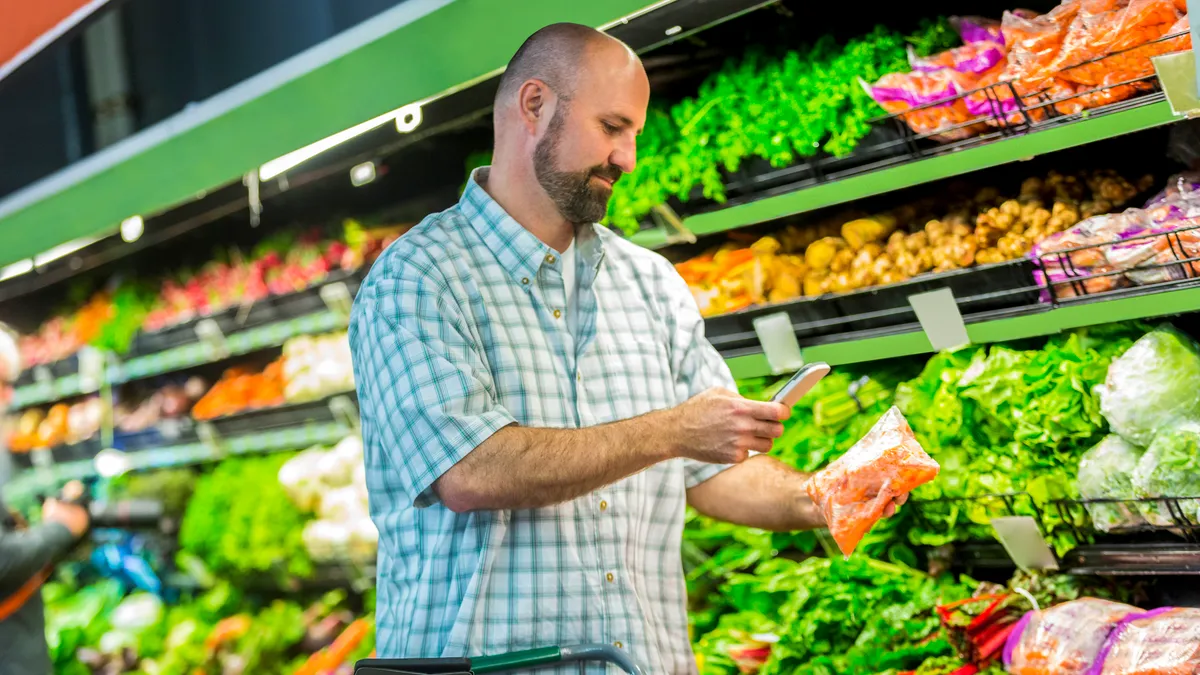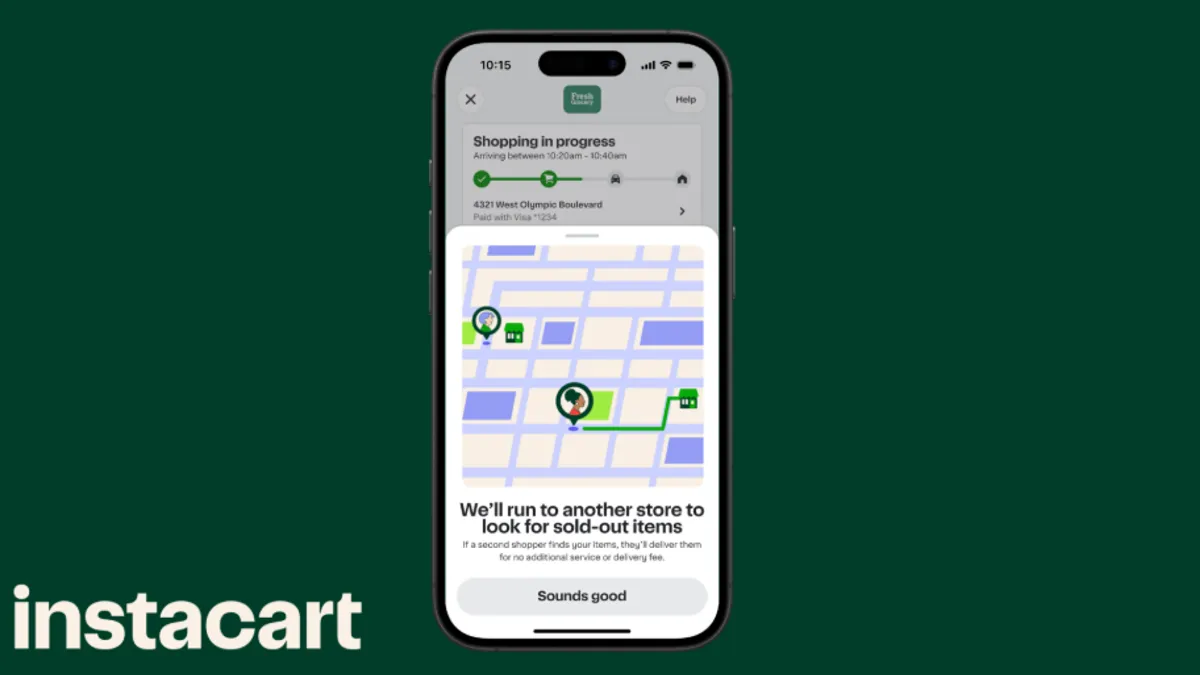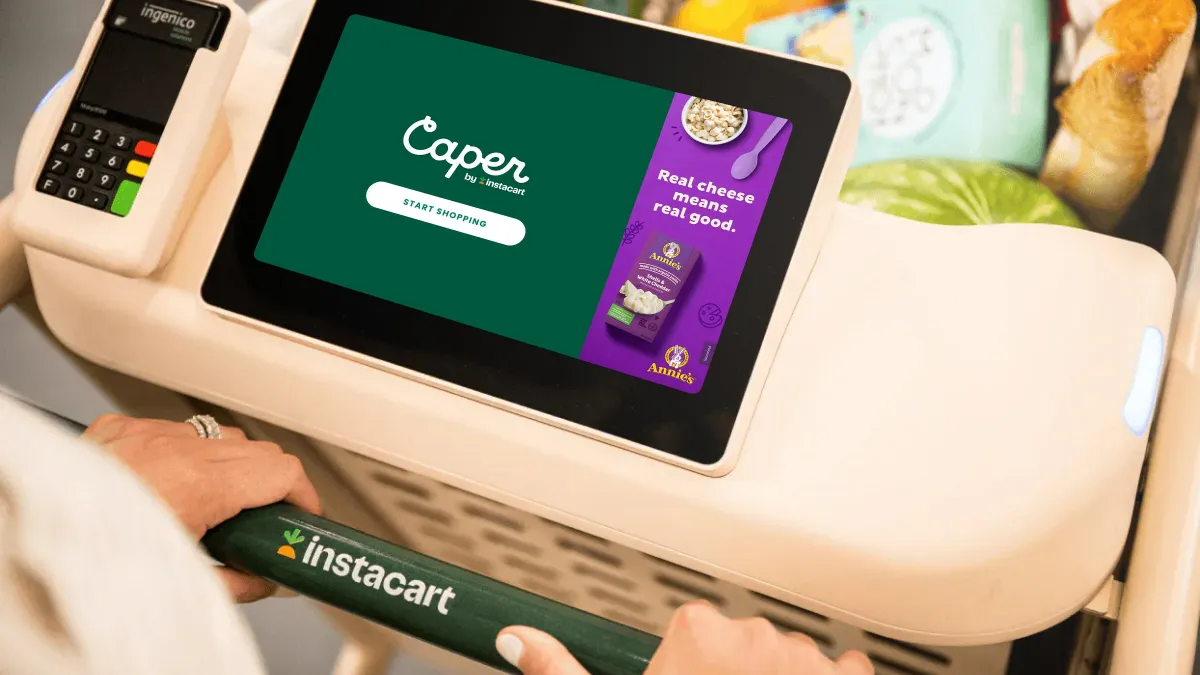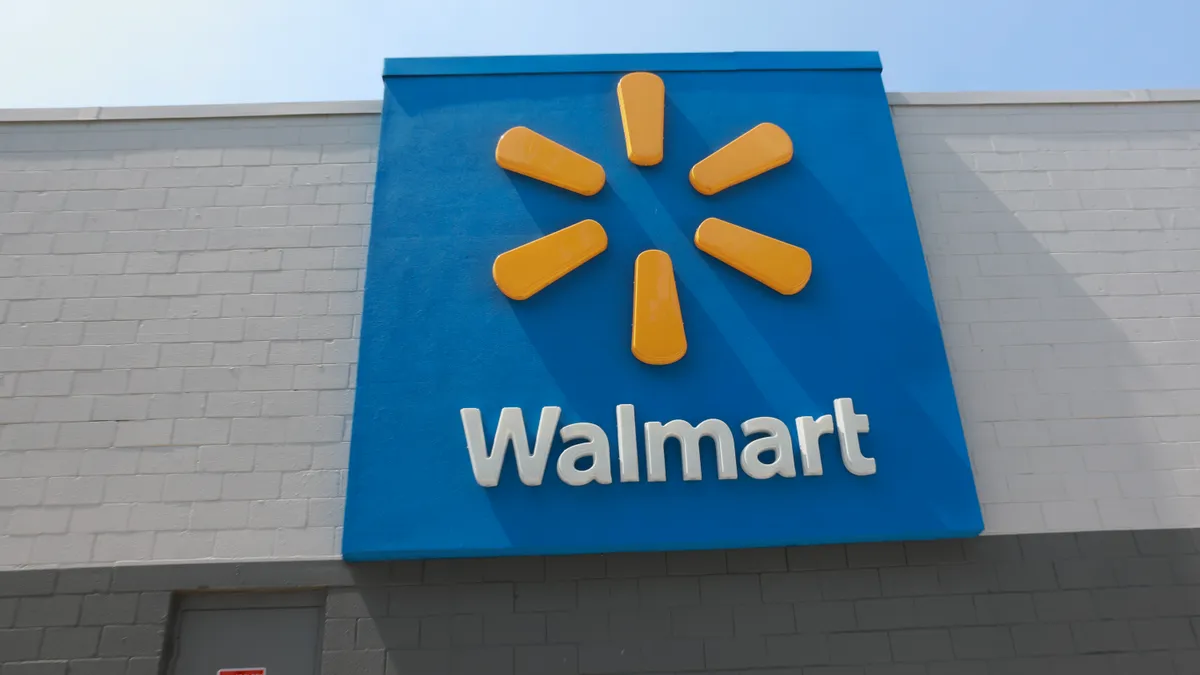Walmart is the world’s largest retailer by a large margin, but it isn’t taking its No. 1 position for granted. The company is engaged in a large-scale program to refresh hundreds of its locations around the U.S., part of a push by the mass retailer to modernize the overall shopping experience and reinforce its leading role in the grocery sector.
John David Rainey, Walmart’s CFO, told investors in February that the retailer will work on 650 remodels in the U.S. during fiscal year 2025, adding to the nearly 700 remodels it completed last year.
Walmart is ramping up its store renovations, which include adding products and modernizing layouts, at a time when discounters and mass retailers have been taking grocery market share from traditional supermarket operators. Walmart already commands roughly a quarter of the U.S. grocery market, according to Numerator data released last summer, and continues to report market share growth each quarter.
Grocery Dive reporters Catherine Douglas Moran and Sam Silverstein recently visited a Walmart supercenter in Germantown, Maryland, that was remodeled last summer to examine the improvements and see what the retailer might have in store for future remodels.
Refreshing the store design
The approximately 150,000-square-foot store, at 20910 Frederick Road, sports wide aisles and has a simple, no-frills design that complements Walmart’s heavy emphasis on everyday low prices. The shiny concrete floors created a utilitarian aura that reflected the retailer’s image as a place where shoppers come to save money.
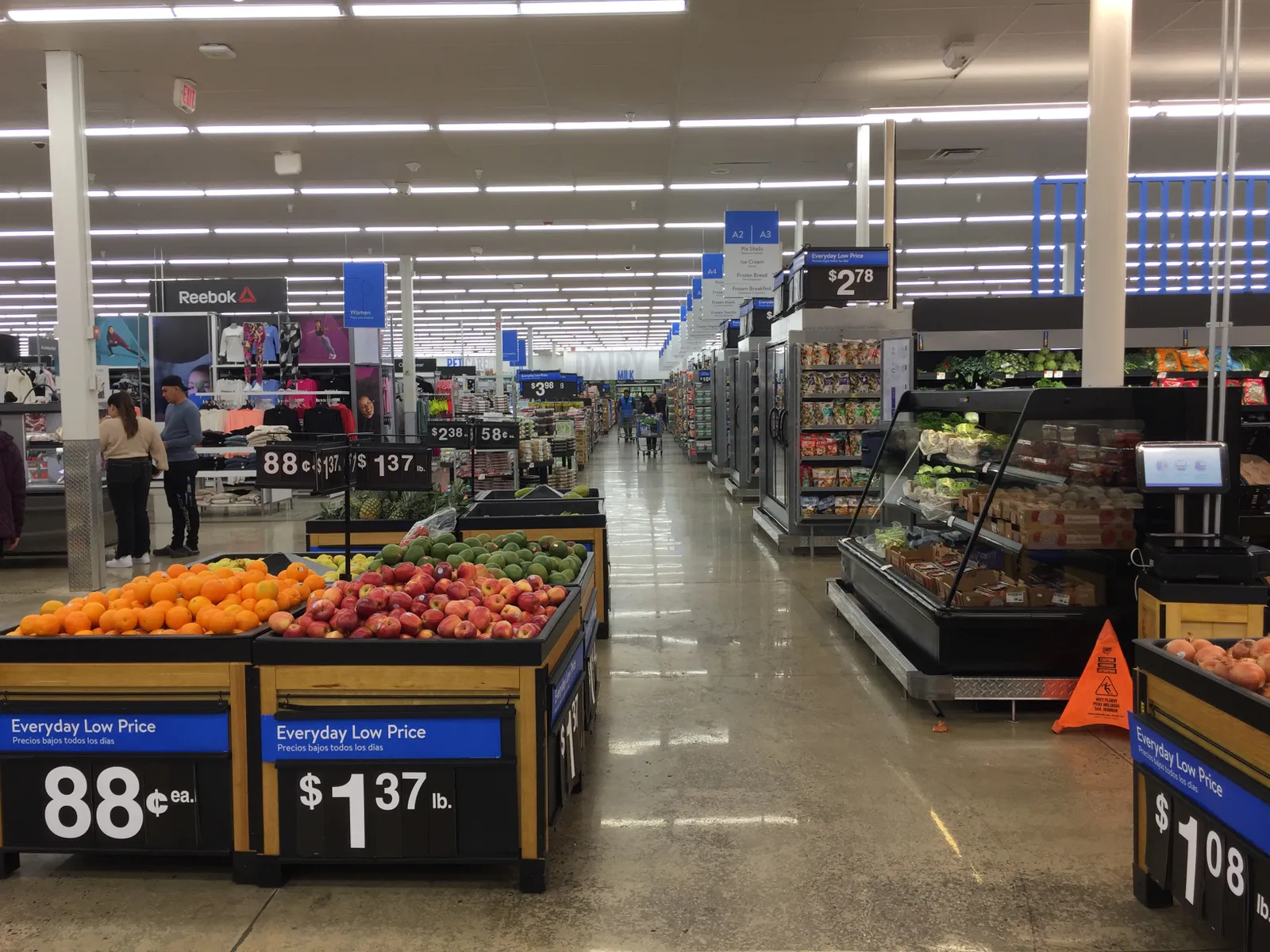
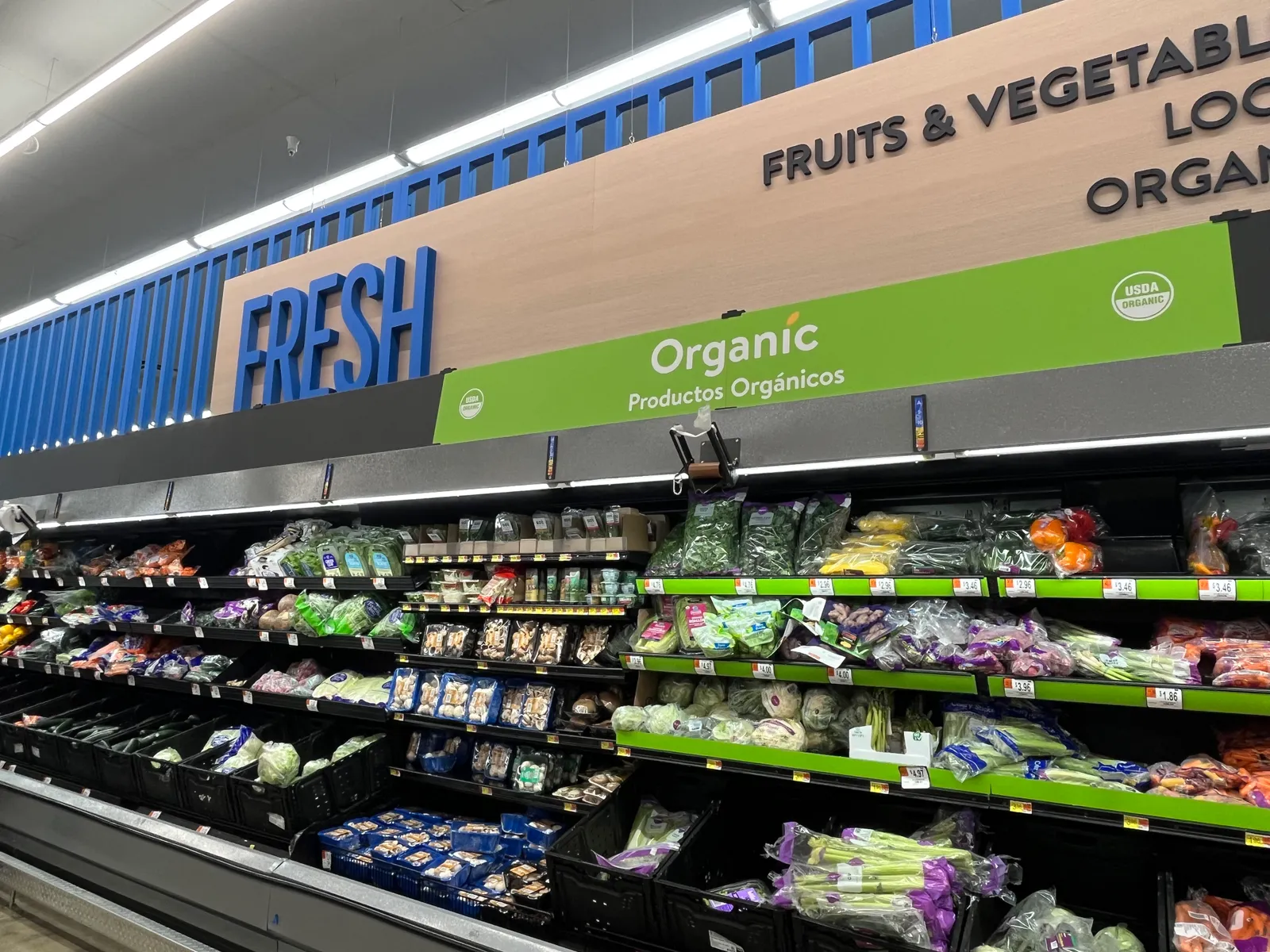
Situated just across a parking lot from a Target in a shopping center filled with big box stores, the updated store features new design elements, such as large department signs, wood-style paneling and decorative blue grills. The store has a bright, clean feel that helps it stand out from other Walmart locations.
Calling out low prices
Walmart has built its reputation on providing shoppers with value, and the Germantown store is designed to emphasize the retailer’s efforts to hold down costs for consumers from the moment you walk in. The grocery section sits just inside the front door and greets shoppers with a barrage of large “Everyday Low Price” signs.
On the day we stopped by, the store was offering limes for 25 cents each, cucumbers for 98 cents apiece and loaves of bread for $1 — a “rollback” from $1.47. A sign above a spacious grab-and-go case, meanwhile, reminded shoppers to “Spend a little. Get a lot.”
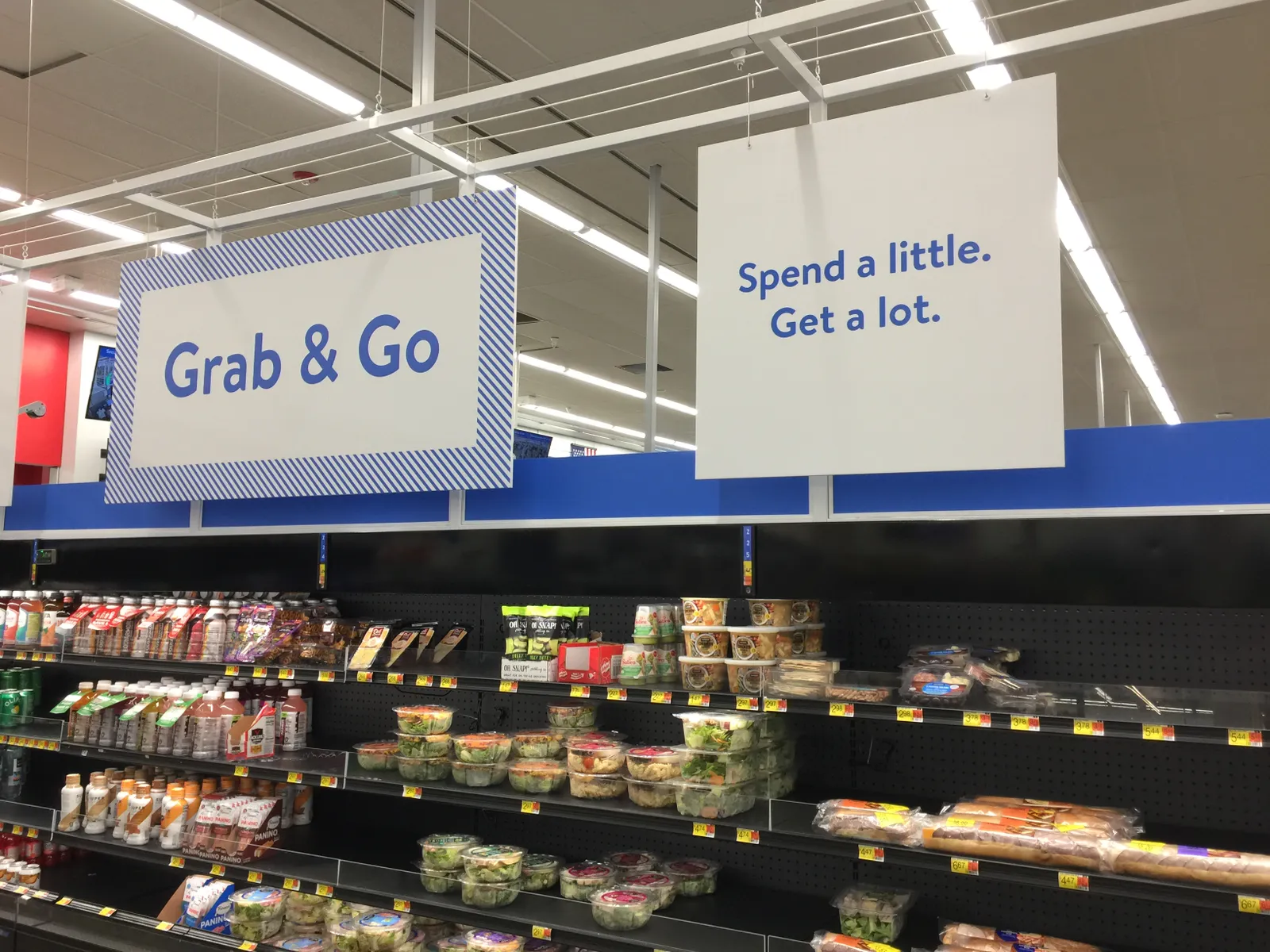
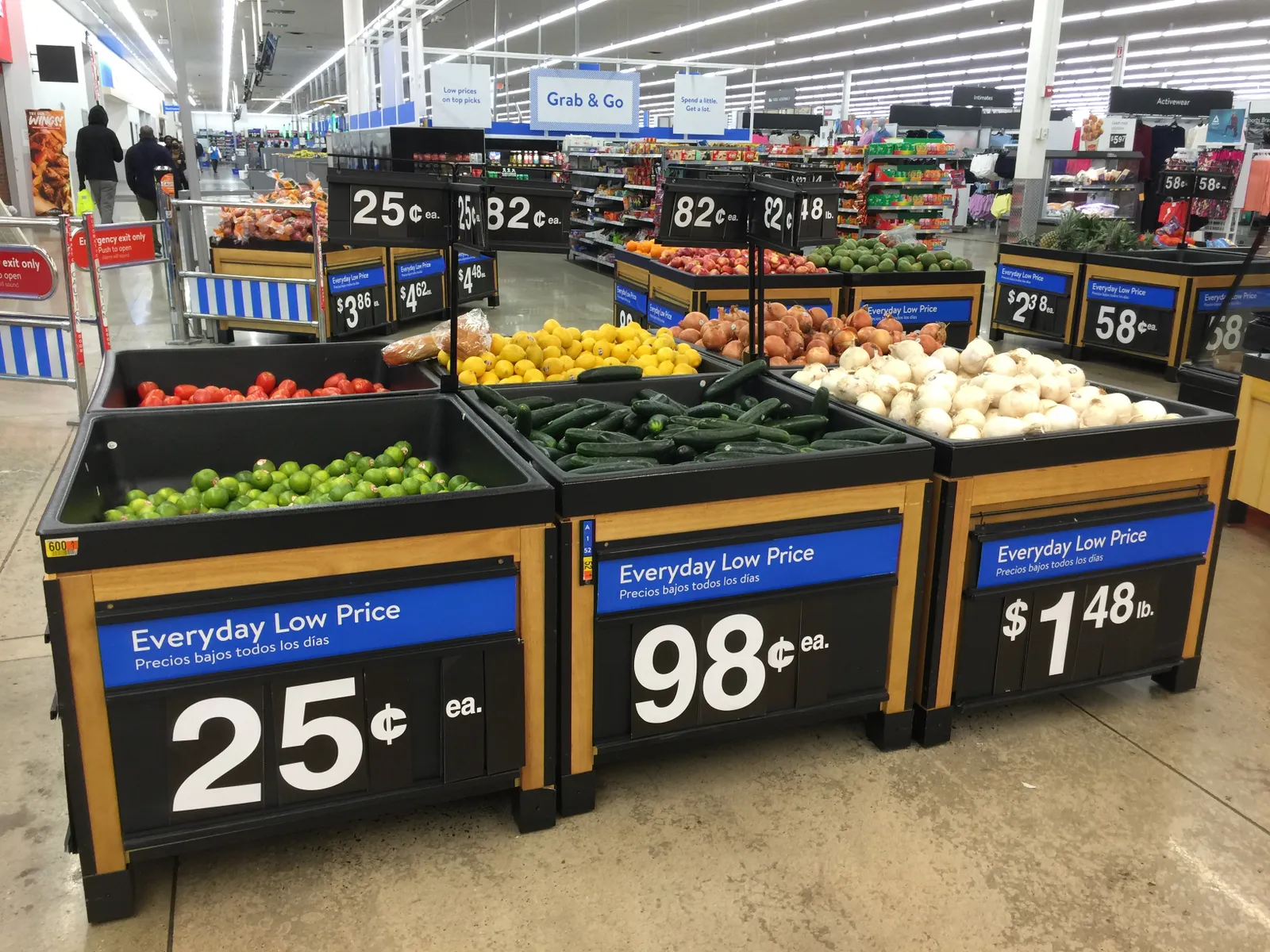
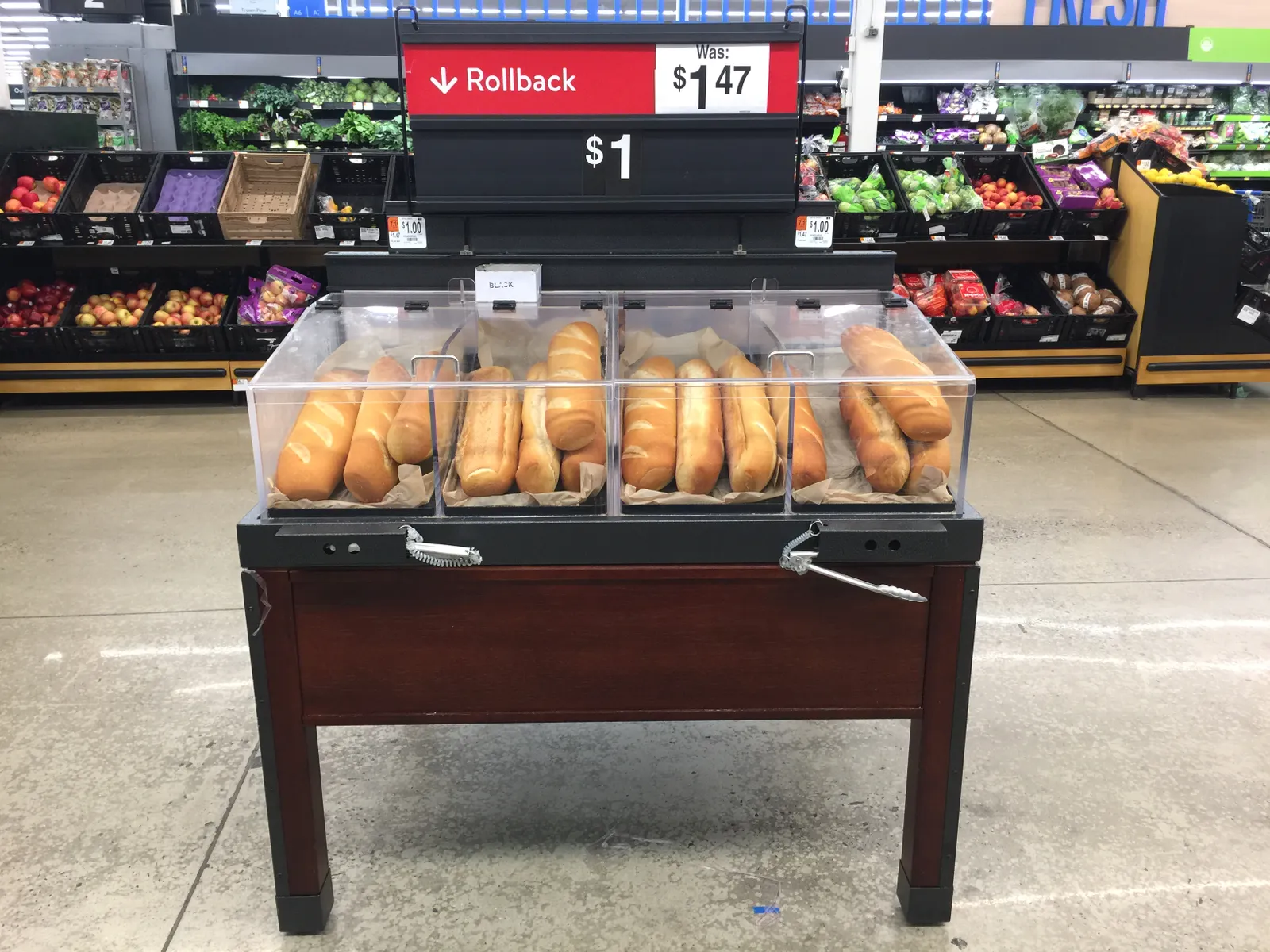
Making grocery and foodservice more appetizing
The newly redone Walmart offers a broad range of meal solutions, from grab-and-go to made-to-order to ingredients for cooking. The foodservice options seem like a move to strengthen Walmart’s competitive edge against supermarkets, which have made a point of trying to siphon customers’ meal dollars from restaurants.

The store’s heavy focus on groceries is a key factor differentiating it from the nearby Target, where general merchandise is front and center and groceries are off to the side. The retailers’ diverging approaches suggest that as Walmart retools its stores, it wants shoppers to see it as a grocery store that also sells other goods, while Target sees its grocery selection more as an add-on to its assortment of coats, electronics and other products.
At the front of the store are a Grab & Go section with prepackaged meal solutions and a Charleys Cheesesteaks restaurant, which offers cheesesteaks, wings, shakes and sides like fries and has a seating area.
An eye on security and loss
At the entrance, automatic gates greet customers but will make a beeping sound if customers try to exit that way. As an added loss-prevention measure, workers stationed at the doors during our visit were checking some customers’ receipts as they left.
In the personal care section, there’s a semicircular area with a manned checkout counter where shoppers who want to buy goods from that department have to pay for those products. Some items, like perfume, hair color, razors and shower cream, were secured behind glass doors with signs on the cases noting that shoppers can press a button to call an associate for assistance.
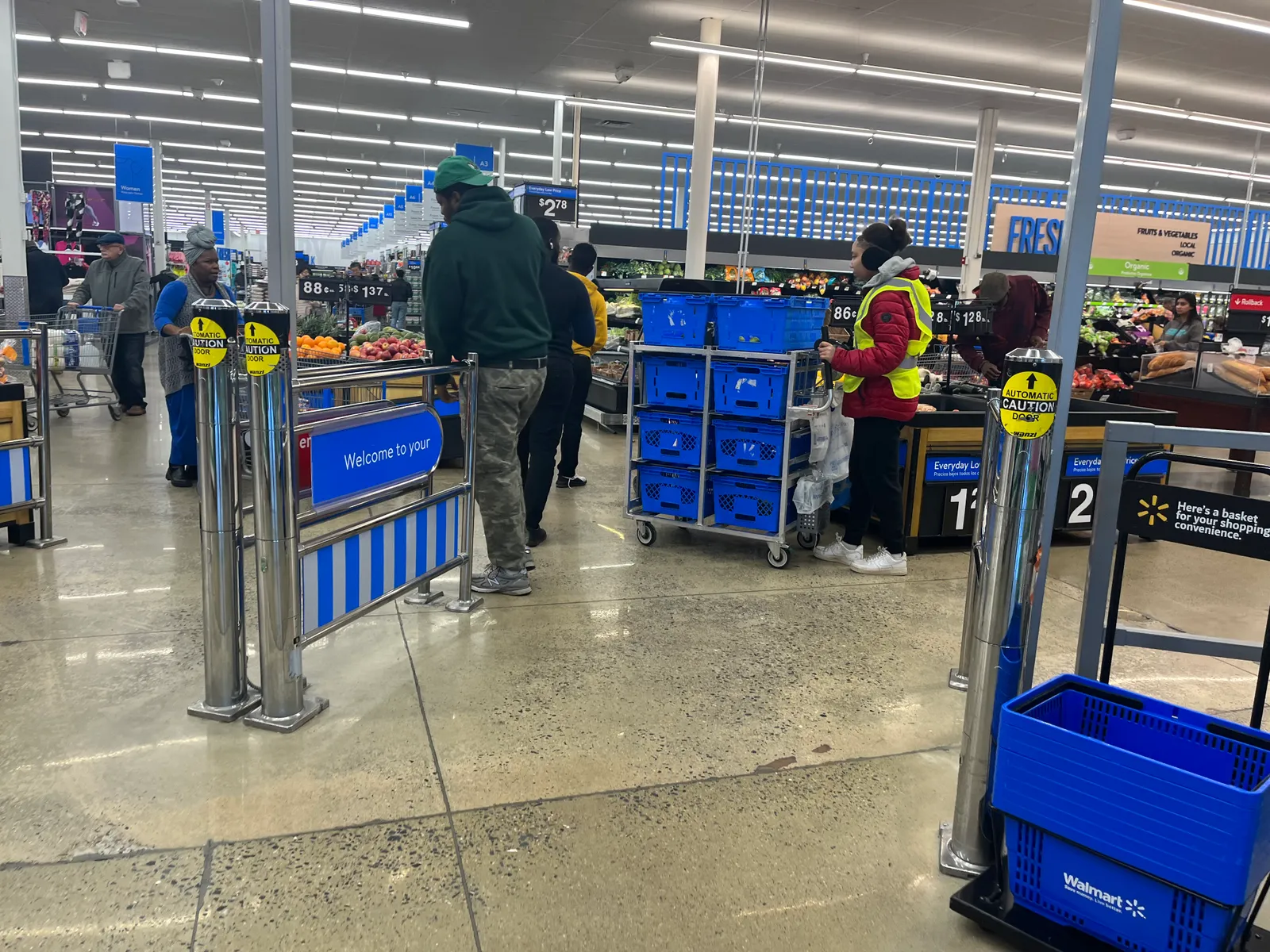
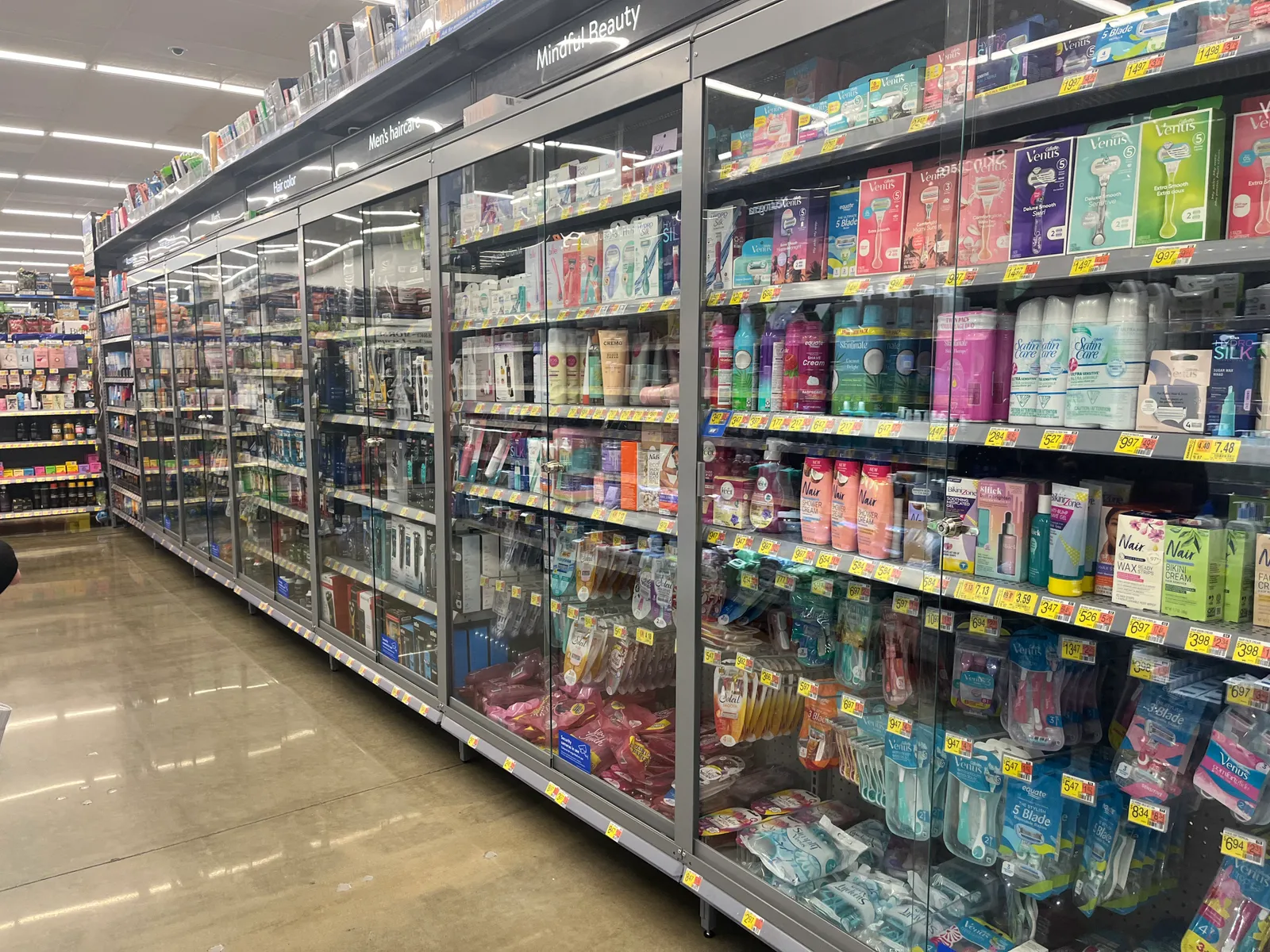
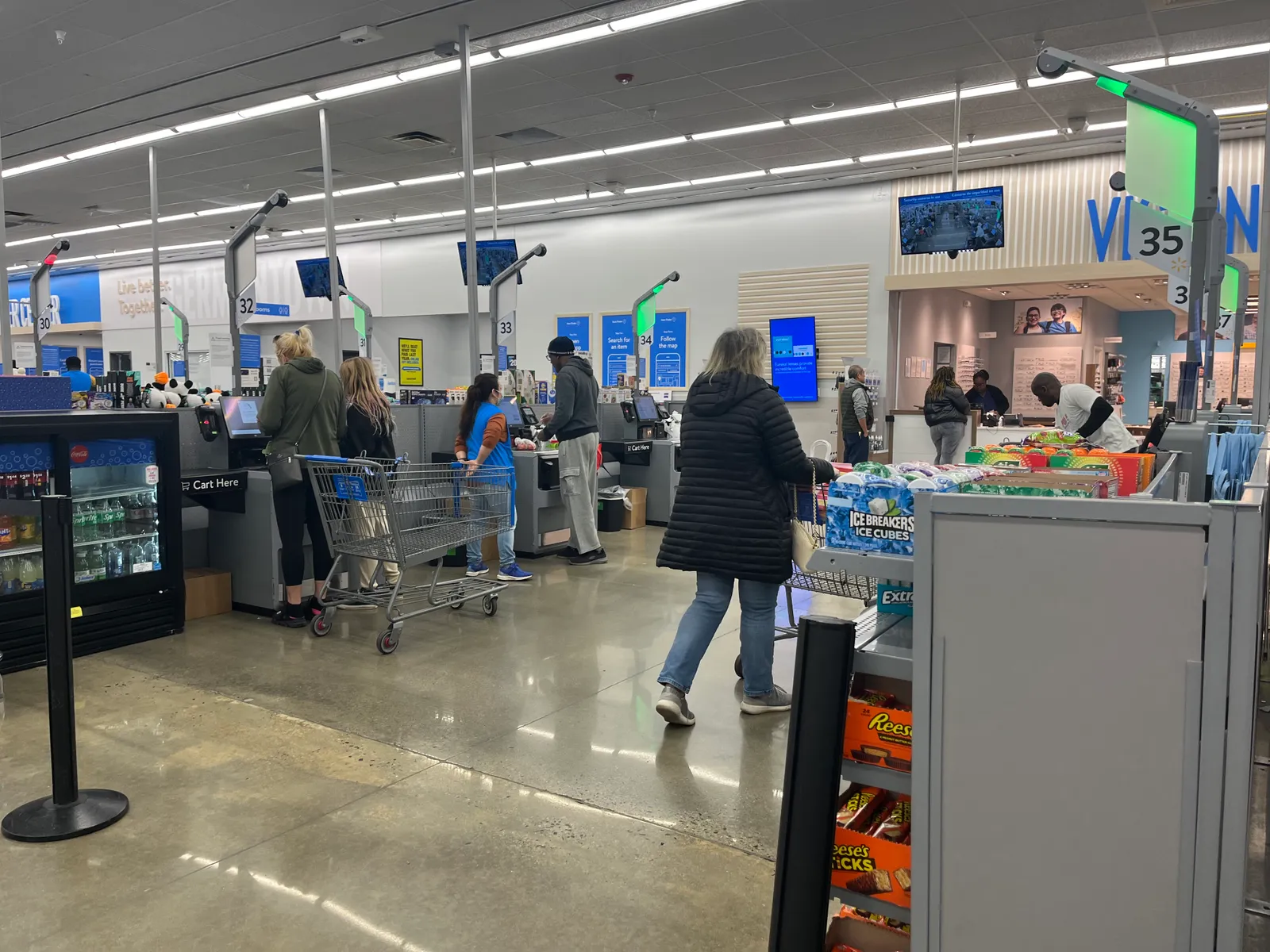
The store’s front end includes multiple self-checkout stations that bookend staffed payment lanes. Large video monitors remind customers that security cameras are monitoring them.
Elevating non-food categories
The supercenter includes a garden department like at Home Depot, a sports area with fishing gear like at Dick’s Sporting Goods and large clothing and home goods departments like at Target.
The store’s clothing and home goods departments both have floor displays similar to those you might see at an Ikea or Macy’s. The clothing department features eye-catching signage for Walmart’s fashion brand Free Assembly along with mannequin displays.
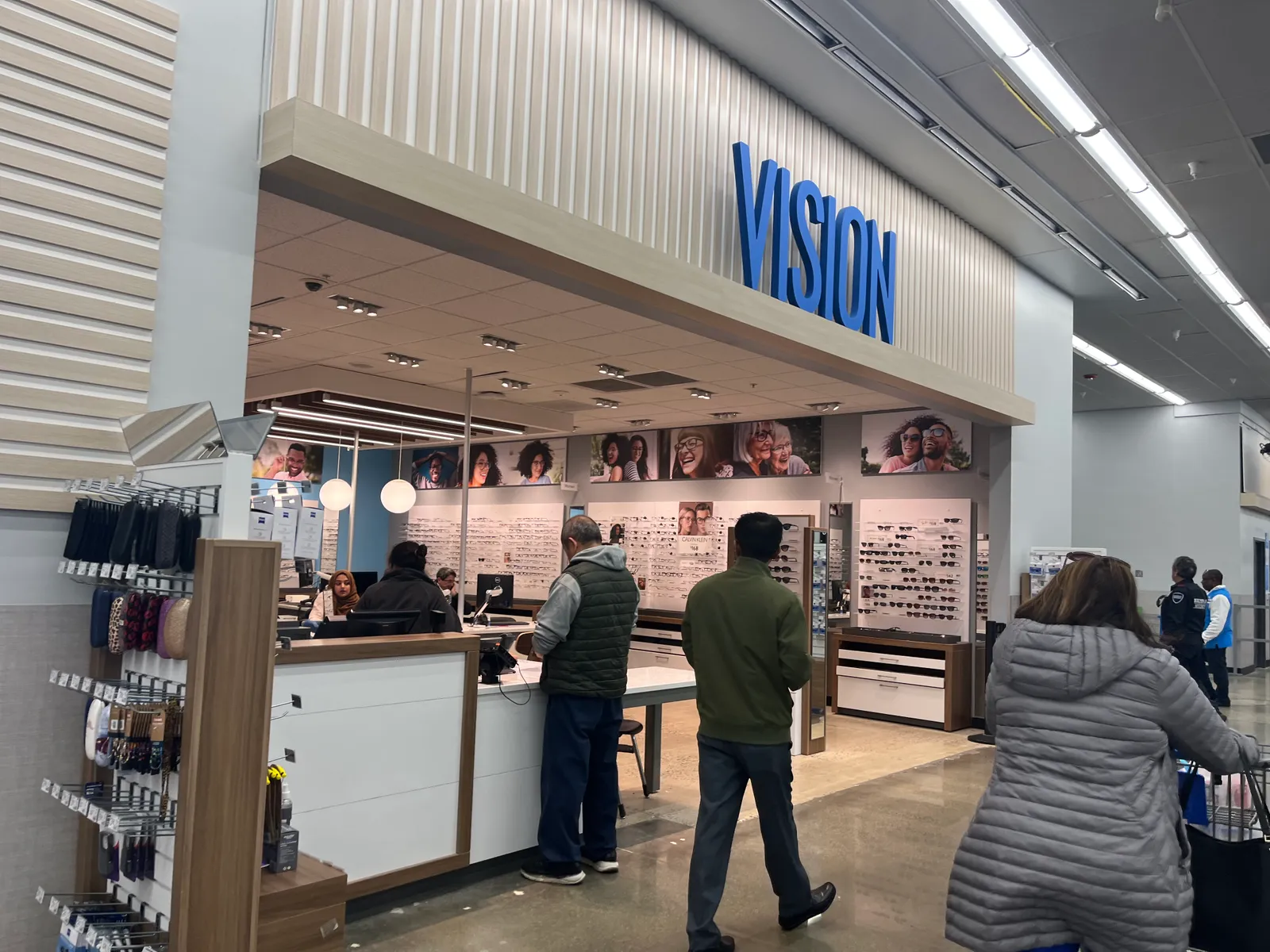
Customers can also find a vision center, auto care center, pharmacy and wireless services, making the store a one-stop-shop for a variety of needs. Notably, the store doesn’t have an in-store pickup counter, although it does have plenty of parking spaces reserved for curbside pickup customers.




